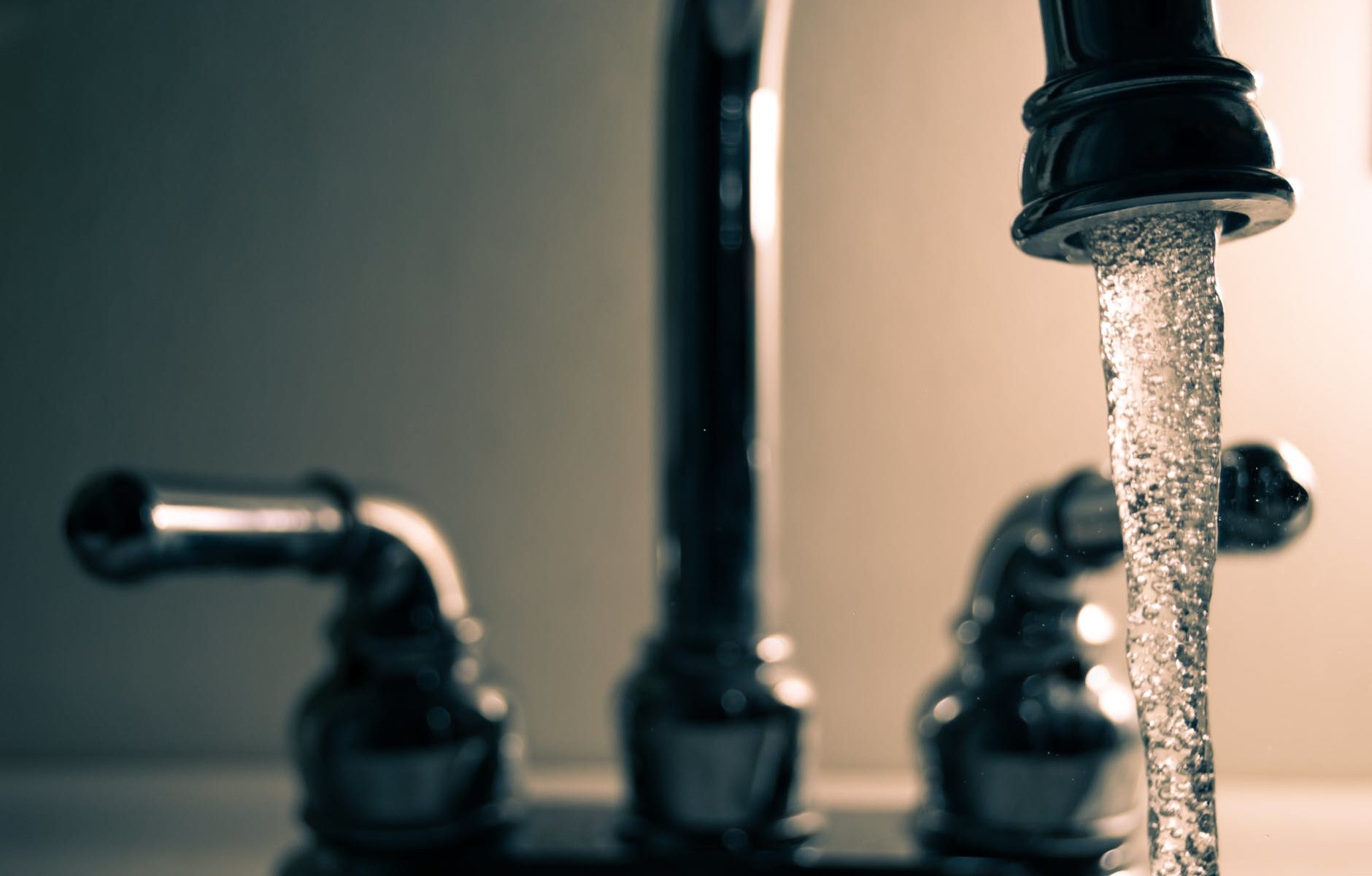No matter where you live or what you believe, you’ve probably heard conflicting information about fluoride.
We are all taught from an early age that fluoride is beneficial for teeth and that it can prevent tooth decay. We hear this from the dentist, from our parents, on TV, and we may even be exposed to an advertising campaign aiming to make sure we know all the wonderful benefits of having fluoride in our toothpaste and in our water.
We also hear conflicting information, however: and usually this information comes from less… “reliable” or “trusted” sources.
Perhaps you heard it from your conspiracy theorist uncle, or you saw alarmist posts on social media. Maybe you’re noticing the products on the store shelves that boast a lack of fluoride (fluoride-free toothpastes and water filters that can remove the fluoride from your water).
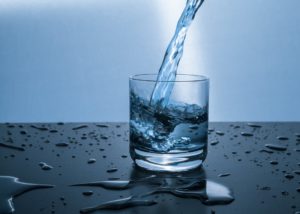
Is All Fluoride Created Equal?
First of all, I have been researching natural health and how to heal ourselves without meds for over a decade. During that time I have discovered that nothing is ever as simple as it seems. Fluoride is no exception. It’s not a clear-cut case of “Fluoride: bad, ” as it turns out.
This fact was discovered by my friend Kara over at Deep South Crunchy Mom when we were discussing Kombucha. She told me that in an effort to cut back on coffee, she was now drinking Kombucha every morning and it was doing wonders for her gut health and energy levels. I told her I had read on the blog Cheeseslave that there were high levels of fluoride in Kombucha, both because tea leaves tend to absorb fluoride from the soil, and because fluoride is a byproduct of the kombucha-making process.
Kara was devastated (but not for long). She knew the fluoride in our water and toothpaste was bad (see below) but thought there had to be some difference between naturally-occuring fluoride in tea and kombucha, and the nasty industrial waste product found in our water supply or even the pharmaceutical grade fluoride found in our toothpaste (which is still a neurotoxin).
Then, if you are curious about Kombucha and what it can do for you, head over to my friend Sara’s blog Clean Living with Kids, to learn more about Kombucha and how to make it.
What is the Truth About Fluoride?
If you’re here for the first time, you may not know it, but I have been researching health, nutrition and the big industries in America for over a decade. (Read here about how I got started on this journey).
I have learned a lot of very eye-opening information during this time, but the number one thing I’ve learned is:
We can’t trust everyone, especially those who are profiting from our trust.
Have you ever heard the term, “Follow the money?”
It may seem cliche, but this phrase one of the truest statements you will ever hear regarding the dangers in our food and water supply as well as a lot of the other dangers in our society today.
If you hear of a “conspiracy” in any area of society, whether it pertains to food or politics or anything else, and you think, “Why would they do that?” The answer is almost inevitably: “Follow the money.”
A Brief History of Fluoride
Fluoride was first added to the U.S. water supply in 1945 in an effort to combat tooth decay.

It seems strange that this was the goal, however, because the year before (1944) the American Dental Association found that fluoride was actually detrimental to teeth and could cause decay and other issues.
The 1944 the Journal of the American Dental Association reported that using between 1.6 and 4 ppm (parts per million) fluoride in water would cause 50% of adults to need false teeth. On top of that, the world’s largest study looked at 400,000 students, revealing that tooth decay increased in over 25% with just 1ppm fluoride in drinking water. (Source 1)
To understand why a chemical of then unknown risk was added to our water supply for seemingly no good reason at all, we have to understand the mindset of the scientific community in post World War II America:
“The history of community water fluoridation is a reflection of the post WWII era of the 1950’s when many thought chemicals in one form or another could solve almost any problem. Our gaze was focused on the beneficial properties of the chemicals, not on the potential hazards. A classic example is DDT, that in addition to being a potent pesticide, almost killed off predatory birds and more recently was found to be harmful to humans.” –Steven Gilbert, Ph.D., founder and director of the Institute of Neurotoxicology and Neurological Disorders (INND) (Source 2)
Since that time, it has become widely known that fluoride is a neurotoxin, yet it is still added to approximately 70% of US water supplies. Why?
Any dentist will tell you it is beneficial for our teeth. But is it?
And what are the potential hazards of this chemical?
And how is it produced?
We’ve already discussed that the American Dental Association has known since 1944 (the year before water fluoridation began) that fluoride is actually not beneficial for dental health. So why have they been adding it to water supplies ever since?
 In 1945, a large quantity of hydrogen fluoride was produced as a byproduct of industry from DuPont’s Deepwater, New Jersey, plant. The huge quantities of this chemical byproduct were a problem: they had no good way to dispose of it, so they proposed a solution: add it to the water supply. After the government was convinced that fluoride was good for our dental health and that it should be added to water, they continued to do so, finding other sources, like the fertilizer industry, which produces phosphates as an industrial byproduct.
In 1945, a large quantity of hydrogen fluoride was produced as a byproduct of industry from DuPont’s Deepwater, New Jersey, plant. The huge quantities of this chemical byproduct were a problem: they had no good way to dispose of it, so they proposed a solution: add it to the water supply. After the government was convinced that fluoride was good for our dental health and that it should be added to water, they continued to do so, finding other sources, like the fertilizer industry, which produces phosphates as an industrial byproduct.
Again from Dr. Gilbert:
“Many are surprised to learn that unlike the pharmaceutical grade fluoride in their toothpaste, the fluoride in their water is an untreated industrial waste product, one that contains trace elements of arsenic and lead.
Without the phosphate industry’s effluent, water fluoridation would be prohibitively expensive. And without fluoridation, the phosphate industry would be stuck with an expensive waste disposal problem.”
Studies Proving Harm from Fluoride Ingestion
If you thinks this smacks of conspiracy, take a look at this. When European countries such as Germany, the UK, Italy and France did a risk analysis of fluoride, they all concluded that it was a dangerous toxin and that any potential benefit was not worth the risk.
They further concluded that adding fluoride to drinking water has no measurable benefit to dental health at all. It doesn’t even make sense to take it internally when it is only supposed to help prevent enamel erosion and decay.

Dr. Gilbert explains that the U.S. government’s decision to fluoridate drinking water was the result of two short-term studies that compared cavity rates in a city with water fluoridation (Muskegon/Grand Rapids, Michigan) with the cavity rates in a city without it (Kingston/Newburgh, New York).
These two studies were set to run 10 years, but when early results showed cavity reduction, the U.S. Public Health Service approved water fluoridation after five years — with no data or safety studies on long-term toxicity.
A more recent study done by researchers collaborating in Canada, the U.S. and Mexico shows that fluoride levels ingested by a pregnant mother is inversely proportional to the IQ of the child she is carrying. Because of reports of neurotoxicity from fluoride, these researchers wanted to do a study that measured the actual effects on prenatal brain development when the pregnant mother ingested differing amounts of fluoride. The study included 299 participants and the results were astounding: for every increase in maternal urine fluoride by0.5mg/L, the IQ of the child she was carrying was lowered measurably and significantly (Source 5).
Okay, so we shouldn’t fluoridate our water… but what about toothpaste?
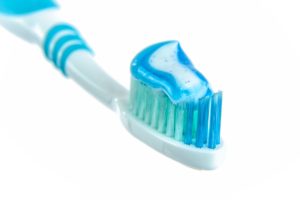
If you are thinking that maybe fluoridating the water supply went too far, but we should still harness the dental health benefits of this chemical at the dentist and when we brush our teeth, think again.
Remember, it’s never a good idea to put a neurotoxin in your mouth.
Let’s look at this logically. Pick up a tube of fluoridated toothpaste and look at the back. There is probably a warning on the back that it is “harmful if swallowed,” and that you should call poison control:
Wait…what?
You should call poison control if you swallow something that you put in your mouth every day? Does that sound reasonable to you?
How much fluoride is worth calling poison control?
The amount of toothpaste that the package itself says it harmful to swallow (and that poison control should be enlisted) is the amount in one use: a pea-sized amount (as listed on the package).
Do you know anyone who uses a pea-sized amount of toothpaste when they brush their teeth? Do you? These are the images we see every day, on every package of toothpaste, and on every television commercial:
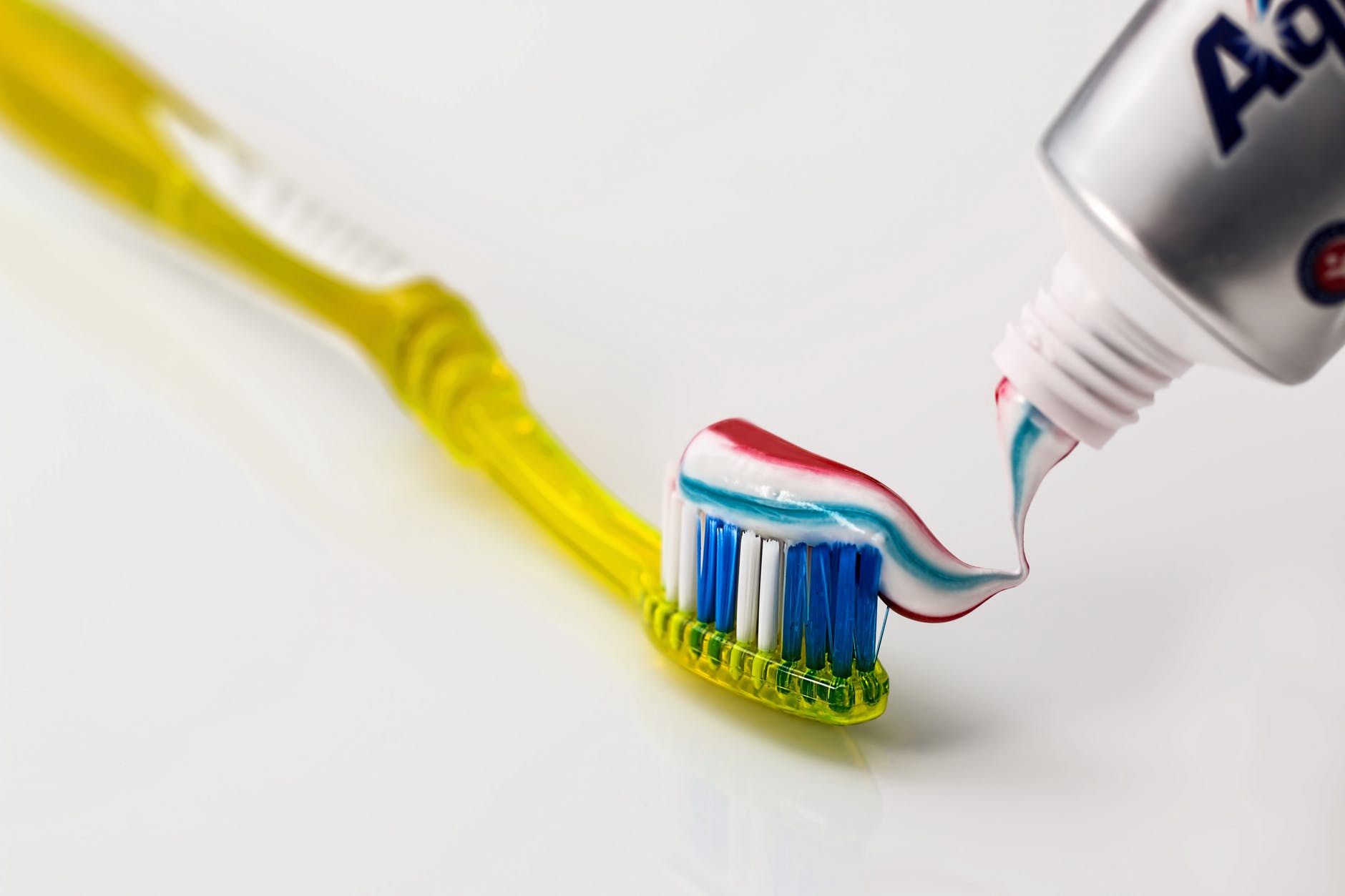
To me that looks like about 6 peas lined up together, and one source said the “pea-sized amount” is about the size of a split pea: much smaller than you would think!

So if more than a tiny pea-sized amount of toothpaste, a product we put in our mouth every day at least once, is swallowed, we are supposed to call poison control. Because fluoride is toxic. Does that sound okay to everyone?
Add this to the fact that the fluoride found in toothpaste is actually pharmaceutical grade, and the fluoride found in our water supply is an industrial waste product (most recently being purchased by our government from China’s industrial waste supply, because not even China thinks fluoride is safe enough to put in their water supply)….

…and to the fact that fluoride doesn’t even benefit our teeth! The evidence that there is any benefit to dental health at all is sketchy at best, and far outweighed by the toxic nature of the chemical itself.
Which really begins to beg the question… why are we being poisoned with fluoride?!
Is it Really That Bad?
At this point you may be thinking, “Okay, I’m sure fluoride is toxic at high levels, but surely we aren’t ingesting anything significant in our drinking water, right?”
Wrong.
And that is why adding fluoride to drinking water is so dangerous. The amount of water people drink on a daily basis can vary widely from person to person, and the toxicity of even just a minute amount can affect a baby much more than it can affect a 200-pound man.
So how can the government be so irresponsible as to allow a known neurotoxin to be added to our water supply? And why would they tell us it’s good for us?
The world’s largest study looked at 400,000 students, revealing that tooth decay increased in over 25% with just 1ppm fluoride in drinking water. How much fluoride is in our drinking water? A minimum of 1ppm.
And how much fluoride do you have to ingest for it to become toxic? Well, that depends what you mean by toxic. The minimum lethal dose of fluoride is 5 milligrams of fluoride for each kilogram of body weight. And how much fluoride does the average fluoride toothpaste contain? About 5 mg in a tiny pea sized dollop (which we 10x every time we brush our teeth).
For an adult, one swallow is not a lethal dose of fluoride, but consider that many children’s toothpastes are also fluoridated:
 “Most disturbing, however, is the fact that even bubble-gum and fruit-flavored toothpastes for children contain sufficient amounts of fluoride to kill a child. Indeed, as shown in the following table, an average-weighing 2-year-old child could die from ingesting just 40% of a “Colgate for Kids” bubble-gum flavored toothpaste.” (Source 6)
“Most disturbing, however, is the fact that even bubble-gum and fruit-flavored toothpastes for children contain sufficient amounts of fluoride to kill a child. Indeed, as shown in the following table, an average-weighing 2-year-old child could die from ingesting just 40% of a “Colgate for Kids” bubble-gum flavored toothpaste.” (Source 6)
So… we make children’s toothpaste taste like candy and then put enough fluoride in less than half a tube of it to kill them.
Perfect.
Another disturbing fact is that fluoride builds up in the body. It is not flushed out like you may think. This means the effects of this poison are cumulative.
Now that 8 glasses of water we drink every day doesn’t seem so harmless, does it? That tiny bit of toothpaste we swallow twice a day just got a lot more intimidating.
What Can We Do?
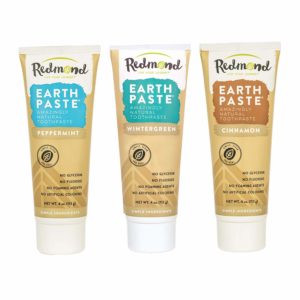 It’s easy to switch to a non-fluoride toothpaste: they’re everywhere (and if you have kids, definitely do that so they don’t accidentally swallow an amount that would harm or kill them).
It’s easy to switch to a non-fluoride toothpaste: they’re everywhere (and if you have kids, definitely do that so they don’t accidentally swallow an amount that would harm or kill them).
My favorite toothpaste is clay-based toothpaste, because it binds to bacteria in the mouth for a detoxifying effect and can also remineralize teeth!
What are my options for water?
But of course the main source of fluoride for most of us is in our drinking water. As we’ve seen, many municipalities add industrial waste fluoride into our drinking water and tell us it is good for us.
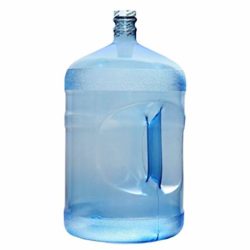 Buy it.
Buy it.
To avoid fluoride, one option is to buy all of the drinking and cooking water we use, lugging it from the store home several times a week. Some people do this, and they are happy with this arrangement. If we don’t want to do that, the only recourse we have (aside from moving to the country and drinking water from a private well) is to purify our tap water.
Purify it.
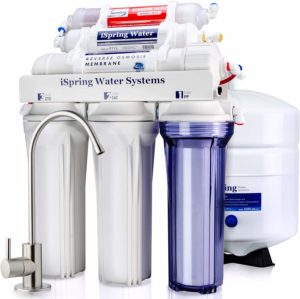 Fluoride is a very small particle, however, and is difficult to remove from water with a filter. Most filters, even if they remove 95+% of contaminants, do not claim to remove fluoride. How frustrating!
Fluoride is a very small particle, however, and is difficult to remove from water with a filter. Most filters, even if they remove 95+% of contaminants, do not claim to remove fluoride. How frustrating!
Until recently, the best way to reliably remove fluoride and other contaminants from the water was a reverse-osmosis filtration system. These are easy to install and they really do work, but it’s like drinking rain water directly from the sky: it’s a sterile water with no minerals, which isn’t ideal.
What kind of filter should I get?
Drinking water, from mountain springs for example, is rich in minerals from rocks and soil, and our bodies need those minerals. If we drink distilled (reverse-osmosis) water, we can become depleted of essential nutrients in the body, which can cause health issues over time. For this reason, most people who use reverse osmosis systems also need to add minerals back into the water with liquid mineral drops or a mineral-rich salt.
All of this is a bit too much work for me, so for a long time I had a decent under-the-sink filter that removed pretty much everything…except fluoride.
There are things you can eat, such as tamarind or iodine, that detox fluoride from the body, but if you can remove it from the source you don’t have to worry about detoxing it.
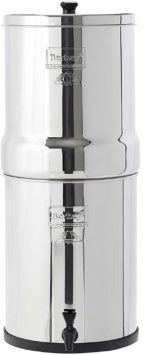 Finally, a filter that removes fluoride, NOT minerals!
Finally, a filter that removes fluoride, NOT minerals!
There are two filters I know of that remove fluoride without distilling the water and removing essential nutrients. One is the Berkey, which is a great choice, but it’s expensive, bulky, and the filter replacements are quite pricey (the fluoride filters are extra).
Recently a friend told me about Epic water filters, and I am hooked. They are convenient (even portable!) and they use a filtration material I am comfortable with: coconut charcoal. They remove 99.9% of tap water contaminants, including fluoride!
They have a variety of options, from under-the-sink filtration units that are easy to install, to pitchers and personal water bottles. They even have a conversion kit for hydroflasks! I got the stainless steel Outback for my son to take to school after I found out he was filling up his water bottle in the water fountain. I opened it up and it smelled like it had been filled in a pool! Yuck!
 I’ve been very happy with my Epic water filters, both in terms of cost and performance, and the only drawback I have found so far is that the water takes a little longer to filter. I think this is because it has to filter the tiny fluoride particles, the filter is that much more dense, and it just takes the water longer to get through it. Overall, Epic water filters have been a great solution for my family to get clean, fluoride-free drinking water for a low cost.
I’ve been very happy with my Epic water filters, both in terms of cost and performance, and the only drawback I have found so far is that the water takes a little longer to filter. I think this is because it has to filter the tiny fluoride particles, the filter is that much more dense, and it just takes the water longer to get through it. Overall, Epic water filters have been a great solution for my family to get clean, fluoride-free drinking water for a low cost.
The Plot Thickens…
Don’t forget to check out my friend Kara’s post about why not all fluoride is created equal…
And if you are curious about Kombucha, check out Sara’s post about the benefits of Kombucha and how to make it yourself.
Resources and Citations
Fluoride: How A Toxic Poison Ended Up In Our Water Supply
Dr. Mercola: A Statement Opposing Fluoride
Hazard Profile on the Fluoridation of Drinking Water
Prenatal Fluoride Exposure and Cognitive Outcomes in Children at 4 and 6–12 Years of Age in Mexico
What is a Lethal Dose of Fluoride?
How Fluoride Was Sold to America and How We Bought It
New to Freedom & Coffee? Start here.
Disclosures:
Many of the product links in this post are affiliate links, which means I will receive a small commission from any purchase. I only recommend products that I love and this is at no extra cost to you. Thank you for supporting our mission with your clicks!


